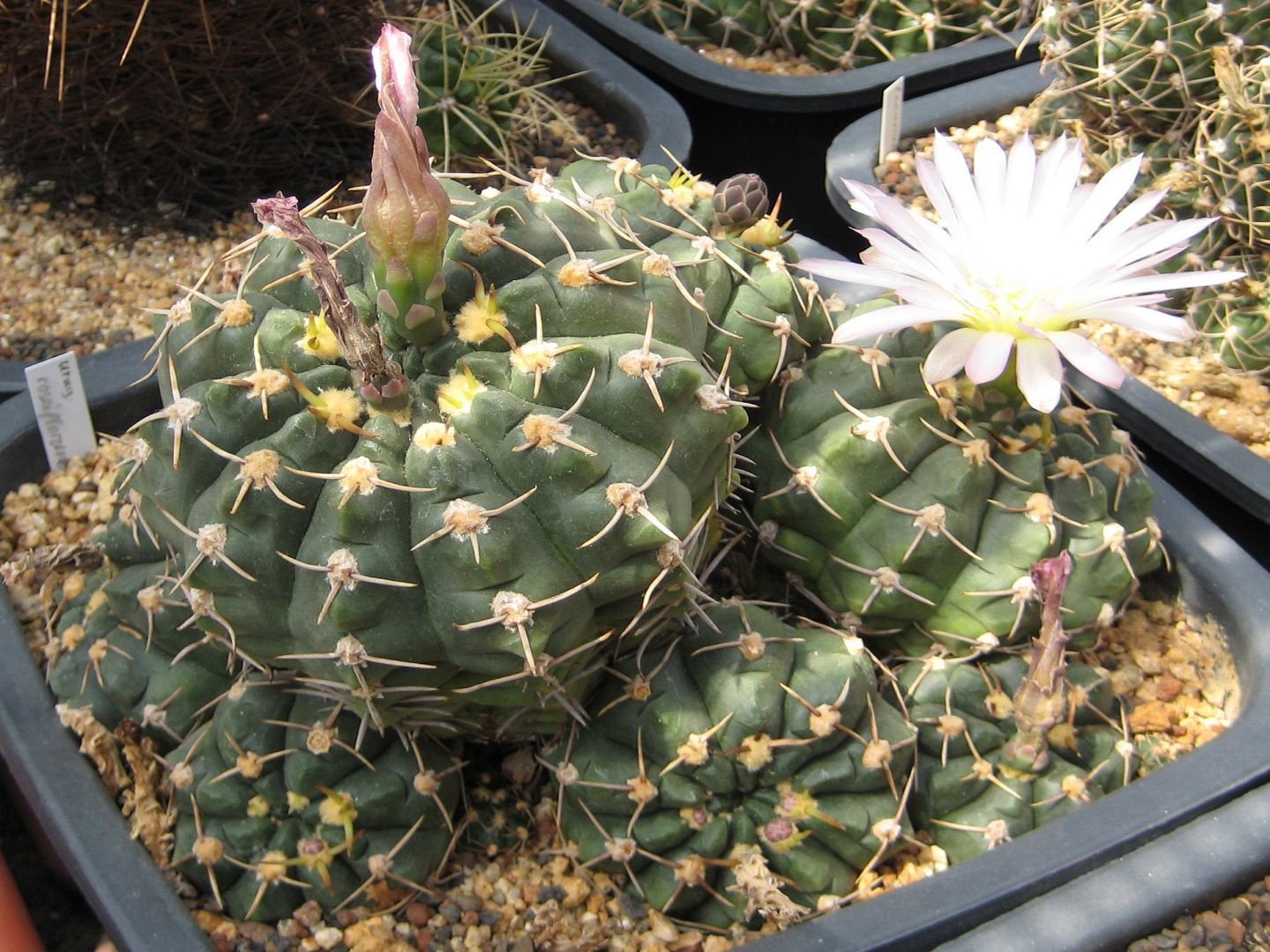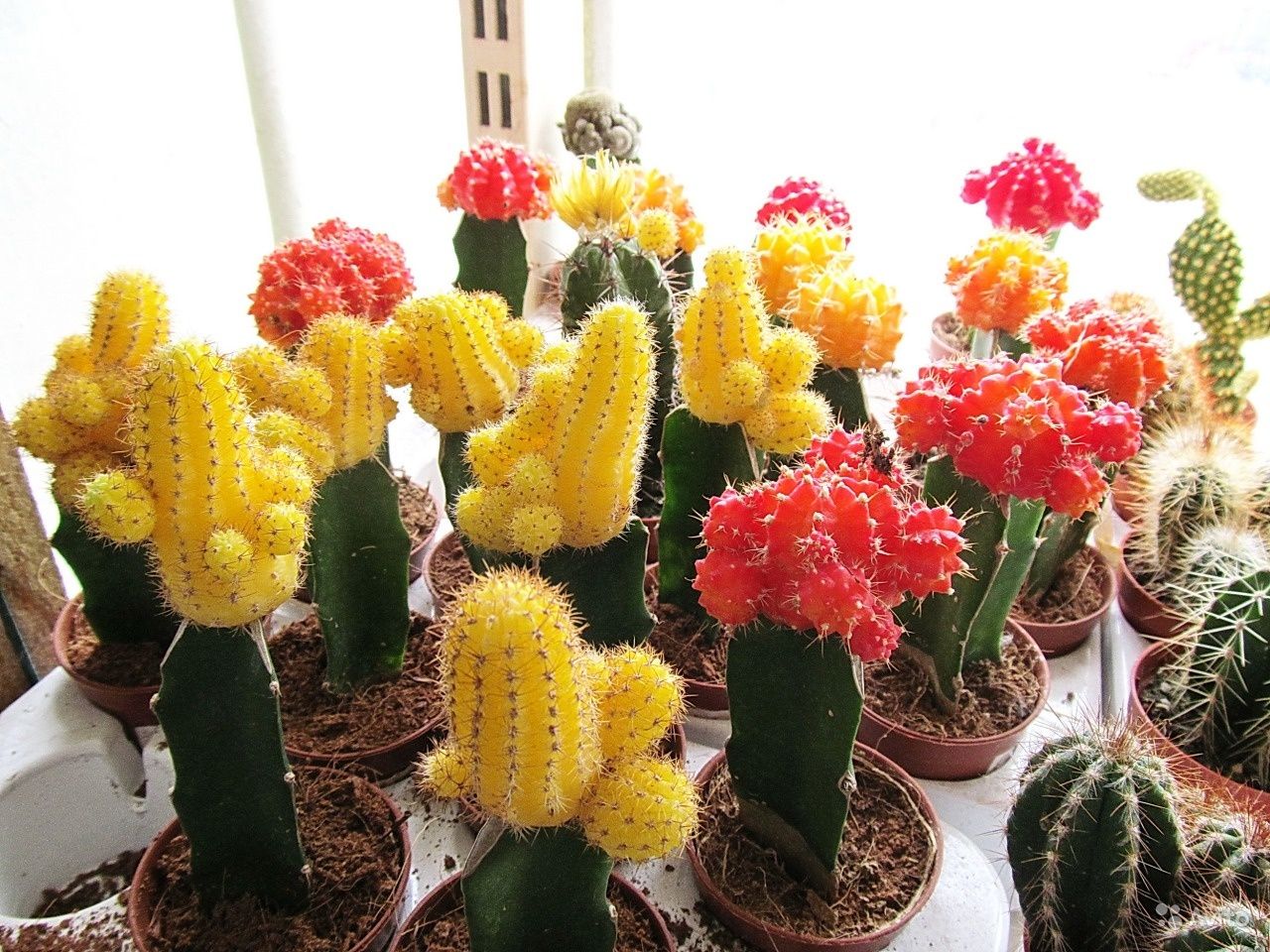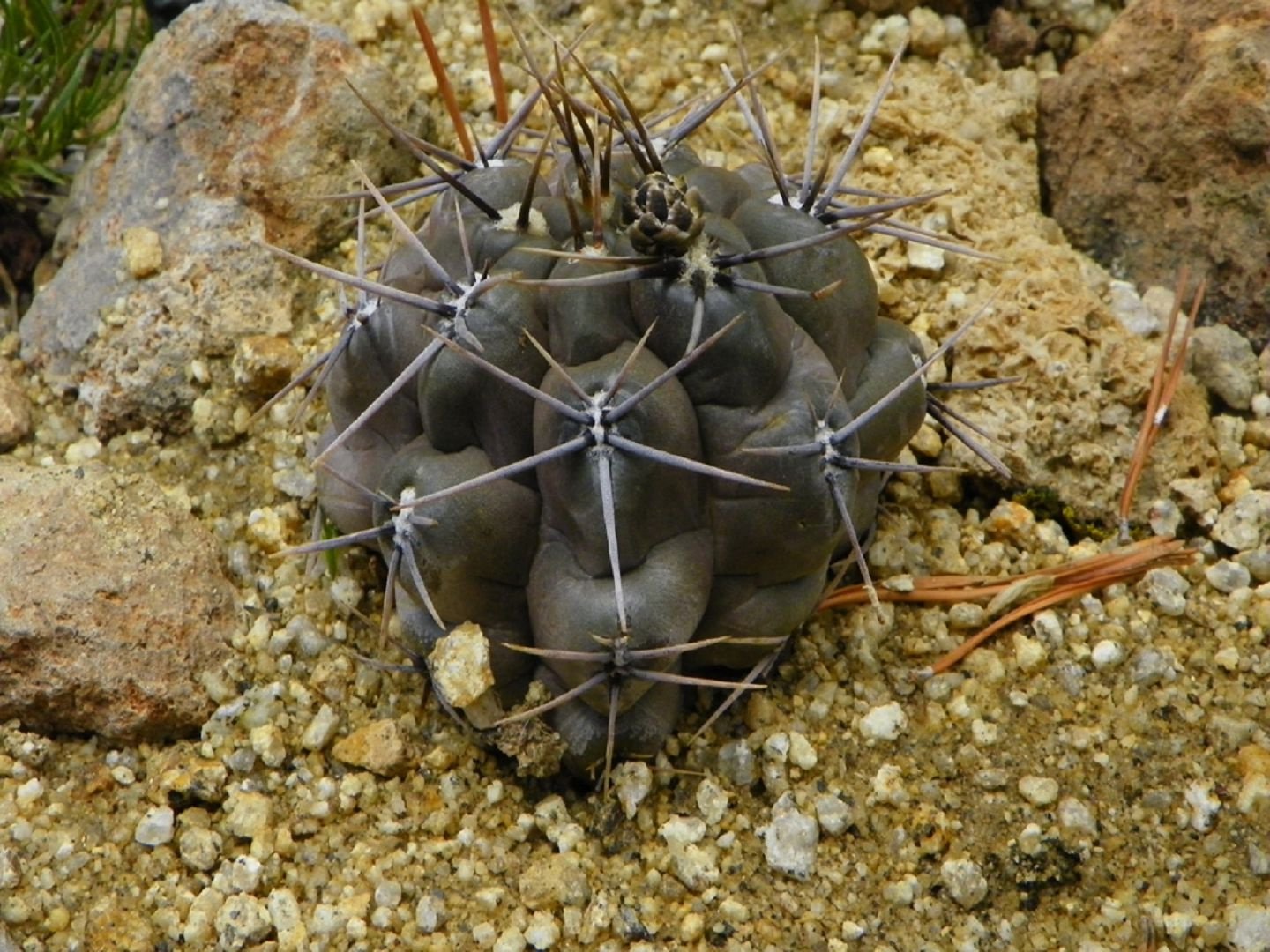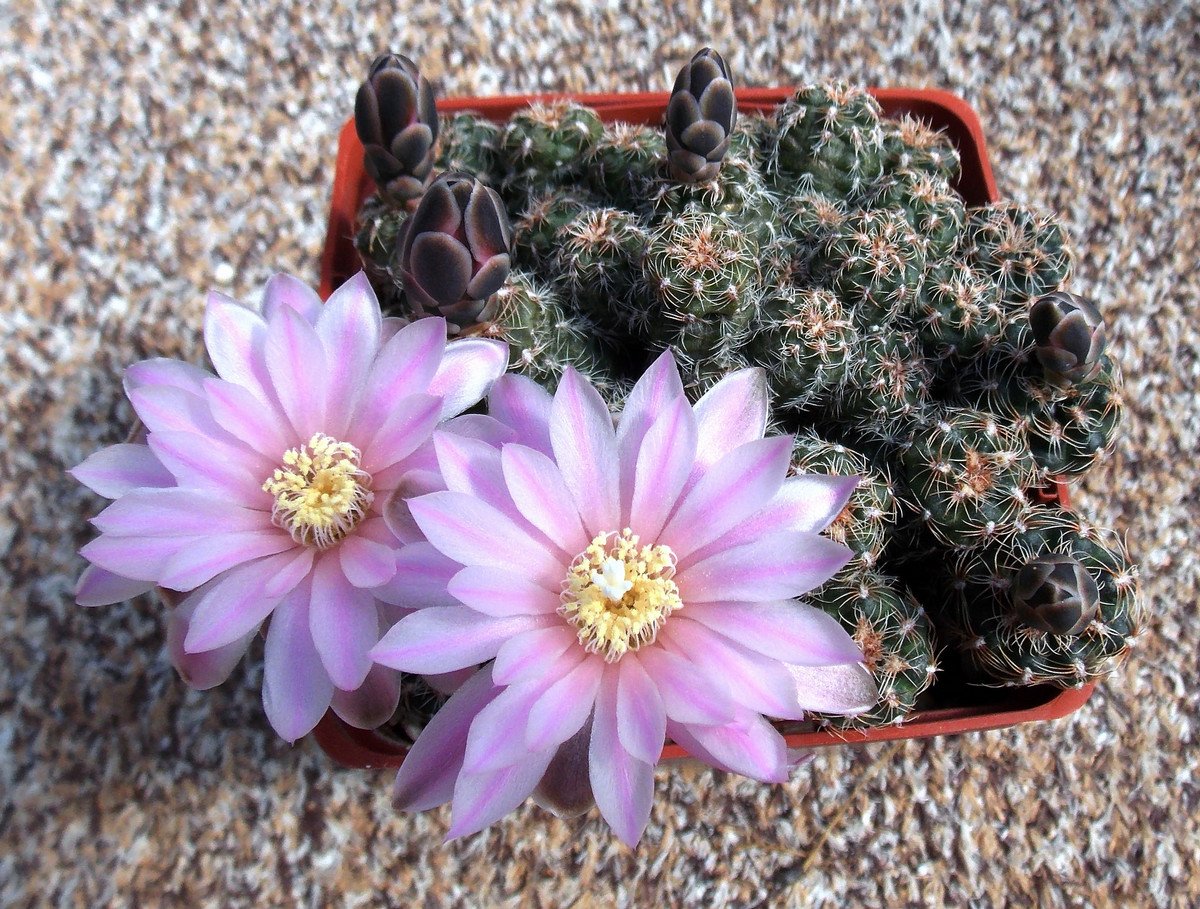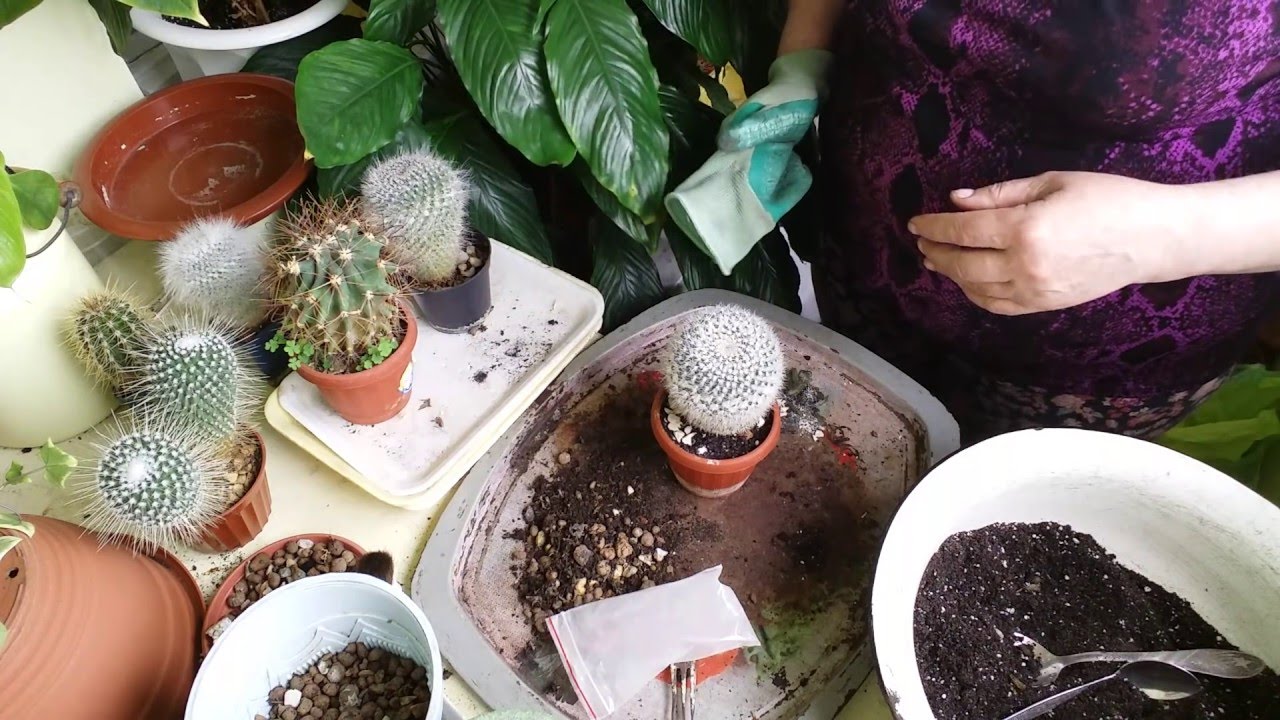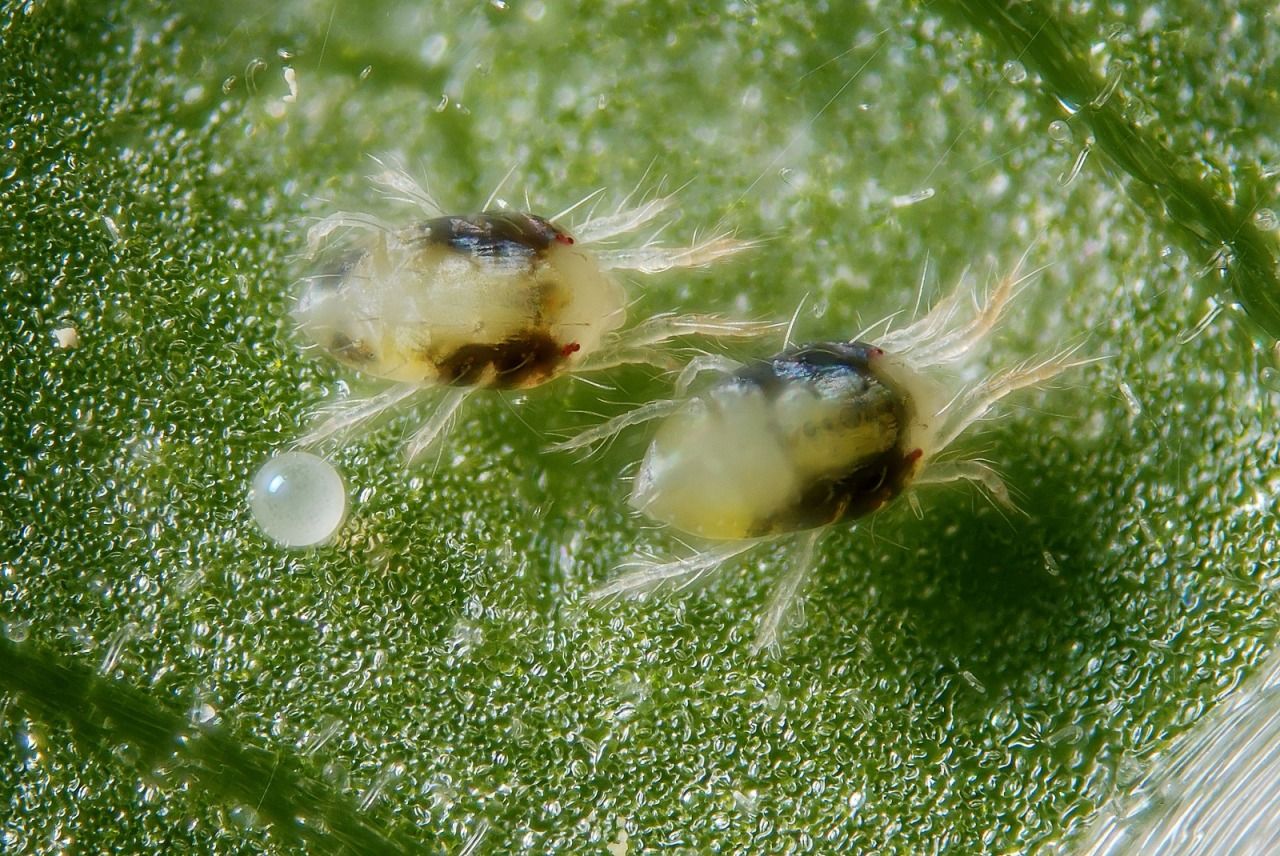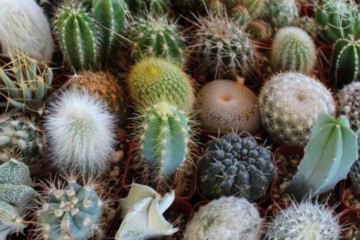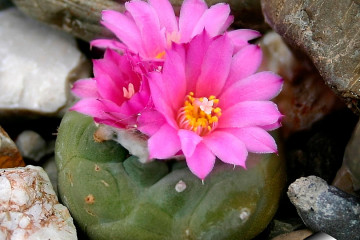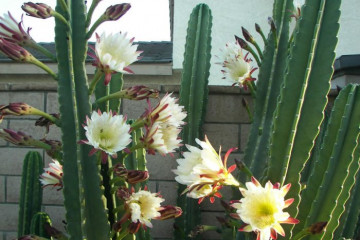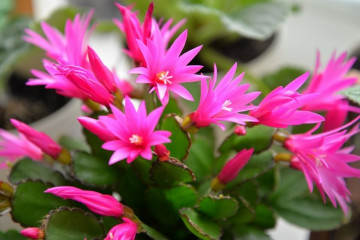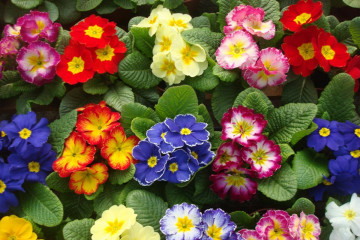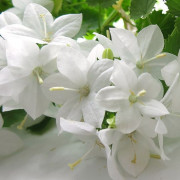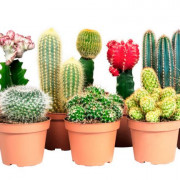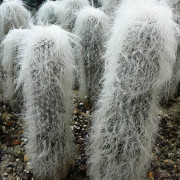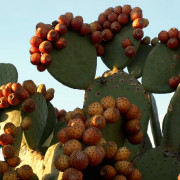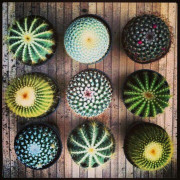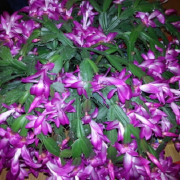Cactus Gymnocalycium - home care
Content:
The hymnocalycium cactus is considered the most common in floriculture. This cactus is often called "Japanese", although the plant is native to South America. The selected varieties have a unique color, which was obtained after the extraction of chlorophyll. It is the attractive appearance that made this plant popular among succulent lovers. Taking care of the hymnocalycium is easy if you create the right conditions for growth.
What does the cactus hymnocalycium look like?
The plant belongs to the Cactus family. From Latin, the name Gymnocalicium is translated as "naked calyx". The flowers are not covered with hairs, but are covered with smooth scales. The height of the trunk can be different from 1.5 to 7 cm. The diameter can be 2.5-15 cm. The shape of the above-ground part is round or flat. Flowers can be of different shades.
There are over 150 species of hymnocalycium that share the same botanical description. It is a perennial plant with dense roots that go deep into the ground. The aerial part is dark green in color, and the skin itself is smooth to the touch.
The most common types of hymnocalycium:
- Reductum;
- Frederick or Japanese;
- Baldianum or Balda;
- Mikhanovich;
- Horst.
There is also a separate group of species, which is formed from several plants that are similar in shape and size.
Common varieties
In floriculture, this type of cactus is widespread. Therefore, many varieties have been selected for decorative cultivation, among which there are the most popular:
- Gymnocalycium Reduktum (humpbacked) is the largest representative of the species. With growth, the shape and color of the stem changes. The plant grows from a ball into an oval, which is divided by furrows. Reductum can grow up to half a meter. The spines are arranged radially. A tuft with sharp long spines is located at the apex of each segment.
- Gymnocalycium of Friedrich (Albiflorum). Succulent was obtained thanks to the efforts of Japanese breeders and therefore has a second name: Japanese hymnocalycium. After chlorophyll was removed, the stem of the plant began to change color - purple, burgundy, red, yellow. The appearance attracts with its originality. But the hybrid cannot grow on its own; it must be grafted onto another cactus.
- Gymnocalycium baldianum - in Russia it is most often called Bald's hymnocalycium. It has the shape of a flattened blue-green ball. The height of the trunk reaches 10 cm, and the width is 9 cm. Gymnocalycium Baldianum is covered with grooves, which turn into "tubercles" as they grow. There are needles at the top of each segment. Depending on the prefix, the color of the buds is determined - Kla, Yellow.
- Horst's gymnocalycium reaches a height of 20 cm. The stem has the shape of a flattened ball of dark green color. At the time of flowering, you can see a pink, lilac or cream-colored bud.
- Gymnocalycium mihanovichii has a stem 5 cm high with ridged ridges. Waves are located along the crests, which visually change the shape of the aboveground part. At the top of the ridges there are light spines located only radially. The flower is pink-green in color, sometimes white-green buds are found.
- Aqua Dulce is a miniature version of the hymnocalycium, which has a low, powerful stem. Rare thorns are found on the surface of the aboveground part.
- Gymnocalycium denudatum is a miniature species. The stem height does not exceed 30 mm in height, and the diameter is 80 mm. The shape of the aerial part is a ball, which is slightly flattened on top. At the time of flowering, it releases several small white buds.
- Damsi belongs to succulents due to its small size (height 20 mm, diameter - 50 mm). It has a round trunk of light green color with radially located needles along.
- Gymnocalycium ragonesii is a small cactus with a brown-green stem. On the surface of the aboveground part, Ragonese has not too clear grooves, which are radially covered with thorns.
- Gymnocalycium quehlianum (Quela) is a succulent no more than 10 cm high. The color of the aerial part is bluish-green. The bud is colored red during flowering with a more expressive edging of the same color.
- Gymnocalycium spegazzinii has a barrel-shaped aerial part, which is colored gray-green. The trunk is divided into ribs with areoles. They have curved spines 5-7 mm long.
Gymnocalycium mix cactus is a group of several small varieties. The diameter of the barrels does not exceed 50 mm. "Mix" is usually planted in one container, creating a combination of plants of different colors and different shapes.
Features of home care
If we talk about this type of cacti, including the Gymnocalycium mix option, taking care of them at home is not too difficult. Agricultural technology involves control over the main indicators - watering, temperature, humidity and light. If you properly care for a group of plants, then within the allotted time you can observe flowering, and the trunk itself will increase in size.
Temperature
The flower is not whimsical to temperature regimes, but its homeland is South America, which means it should still be warm. At different times of the year, succulents are grown at different temperatures:
- In summer, any temperature is suitable.
- In winter - + 8-12 degrees Celsius, some need a temperature of + 15-18 ° С.
- Mikhanovich's cactus can grow in winter at + 5 ° С.
If the air temperature is too low, the plant will die.
Lighting
The plant needs good lighting. The stem should not be exposed to direct sunlight, otherwise burns in the form of brown spots will appear on the skin. The room must be well ventilated.
If direct sunlight enters through the window, then you need to artificially scatter them or remove the flowerpot for several hours in a more suitable place.
Watering
Watering is done about 2-3 times a month. It is necessary to monitor the dryness of the soil. Only settled water at room temperature can be used in the irrigation process.
During the flowering period, the amount of watering may increase.
Spraying
Do not spray the cactus stalk under any circumstances. Water ingress on the aboveground part can lead to decay. Exceptions are those "bathing" that involve treatment.
Humidity
Air humidity in the summer does not need to be controlled, but it should not be 100%.
In winter, the figure should not exceed 70%. Otherwise, the plant will start to rot. To maintain normal humidity in the room, you can use special devices.
Priming
Soil for a cactus is a mixture of humus, turf, peat, sand. All components are taken in equal amounts.
Top dressing
Top dressing is done once a month during the growing season. In winter and autumn, any fertilization is prohibited. As a top dressing, mineral fertilizers are used, in which there are no organic components. Supplements should contain some nitrogen.
Features of care in winter, dormant period
Gymnocalycium is a flower, caring for which at home during winter requires the creation of special conditions. What you have to pay attention to:
- Watering is reduced to 1 time per month. Some species do not need to be watered at all.
- In the cold season, you need to reduce the humidity.
- It must be transferred to a room with a temperature not lower than +15 ° C.
- If the plant does not have enough light, diseases may appear, so sometimes artificial lighting is required.
There are no other features in winter care. After the end of the dormant period, the succulent must be returned to standard conditions of detention.
When and how it blooms
Gymnocalycium blooms at the age of 2-3 years. Some species may discard the bud for the first time after 5 years. The plant can bloom annually, but some varieties only 2-3 times in life.
Flowering begins in early to mid-April and this process continues until autumn.
The bud appears in the part of the trunk shaded from the sun. The flower opens in 10-14 days after emergence. The bud has a lifespan of 10 days.
If flowering occurs in autumn, then the buds may not bloom. Such a nuisance can arise due to too good lighting.
How the hymnocalycium cactus reproduces
You can propagate a cactus at home using side bends or seeds. Each option differs in the principle of care and the procedure itself. The simplest breeding option is considered to be a lateral or basal process transplant. Germinating seeds is a more laborious process that requires compliance with certain conditions.
Germinating seeds
Reproduction by seed germination is considered the most difficult, but cacti grown in this way are resistant to any negative factors. It is necessary to prepare a box with a depth of 2-5 cm, pour a substrate of coarse sand and peat into the container.
When the ground cools down, you need to lay the seeds at a distance of 2-3 cm from each other and sprinkle a little with soil mixture. The soil in the box must be constantly moist. You need to maintain the required level of moisture using a spray bottle. The air temperature should not fall below +20 ° С.
Shoots appear after about 10 days. Such seedlings can be transplanted only after 1-2 years.
Side layering
To propagate the hymnocalycium using side bends, you need to perform the following steps:
- Separate the process from the adult.
- Lay it on a paper towel and dry it in a dark place for 1 day.
- Prepare a pot of sandy soil.
- Press the cutting into the soil so that it does not fall.
Within 14 days, roots appear at the appendix. It is better to carry out the procedure in the spring, when the plant enters the vegetation stage.
Transfer
Sometimes basal processes appear. They have an almost intact root system with the parent plant. The division is carried out at the time of transplantation.
You need to carefully divide the root systems and plant the shoot in a pot of soil. The substrate is used the same as for an adult plant.
Pests and diseases
Due to the incorrect content of the flower, it can be affected by spider mites, rot or mealybugs. The causes of the appearance of diseases and the fight against them are varied:
- Spider mites start only on young plants. Dry and "rusty" spots appear on the skin. Appears due to low air humidity. To get rid of the pest, you need to treat the surface of the cactus with a solution of water and alcohol, and at the end, be sure to ventilate the room.
- The mealybug parasitizes the root system and trunk. If there is no flowering, and the flower itself grows slowly, then the problem is in the mealybug. To neutralize the pest, you need to dig up the plant and wash the roots and trunk under hot running water.
- Rot is caused by too much watering. It is necessary to dig up the cactus, remove the rotten shoots of the roots. Sprinkle the slices with activated carbon powder. And then plant it in a new, disinfected soil.
If you follow the recommendations for care, then there will be no problems with pests. The only source of their appearance can be other infected plants.
You can decorate your house with unusual plants from the Cactus family, which belong to the Gymnocalycium genus. The cactus does not require special attention to itself, it has a non-standard appearance. The bright colors of the trunks and flowers inherent in certain types of this succulent make them "kings" in indoor floriculture. It is possible to carry out the splitting of some varieties to already adults.
